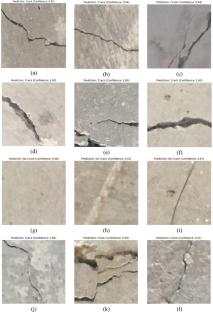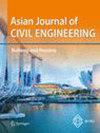Enhanced ResNet50 deep learning algorithm for classification of crack images in RCC structures
Abstract
The assessment of concrete crack conditions stands as a basic requirement to protect the sustainability and security of civil construction elements. Hand-based damage assessment methods prove both too slow and too variable to conduct on big structural elements. The authors propose a deep learning system which applies transfer learning using ResNet50 architecture to perform binary classification on concrete surface cracks. The training and validation processes for model development relied on the METU concrete surface dataset through its 20,000-image subset that equally divided between crack and non-crack categories. Changing the classification end of ResNet50 and freezing the pretrained convolutional layers during training enabled efficient feature learning and minimization of overfitting problems. My training process used data augmentation combined with 80/20 stratified train-valid split distribution. Furthermore, 100 cross-domain crack pictures were created during flexural testing of RC beams in a laboratory setting using a servo-controlled loading frame and utilized to verify model generalization. The experimental results showed 97.00% validation accuracy together with an F1-Score rate of 97.0% better than multiple CNN-based techniques executed on the same dataset. The model demonstrated outstanding performance based on confusion matrix results and sample predictions while remaining effective across different surface textures and crack patterns. The evaluation showed the proposed ResNet50-based model yielded better performance than conventional CNNs and both LeNet variants and VGG-based models as per previous studies. Transfer learning and deep residual networks demonstrate their effectiveness for detecting cracks in a robust and scalable manner according to the obtained results. The proposed model will receive future development which aims to enhance the severity measurement ability alongside real-time deployment technology for autonomous infrastructure surveillance systems.


 求助内容:
求助内容: 应助结果提醒方式:
应助结果提醒方式:


